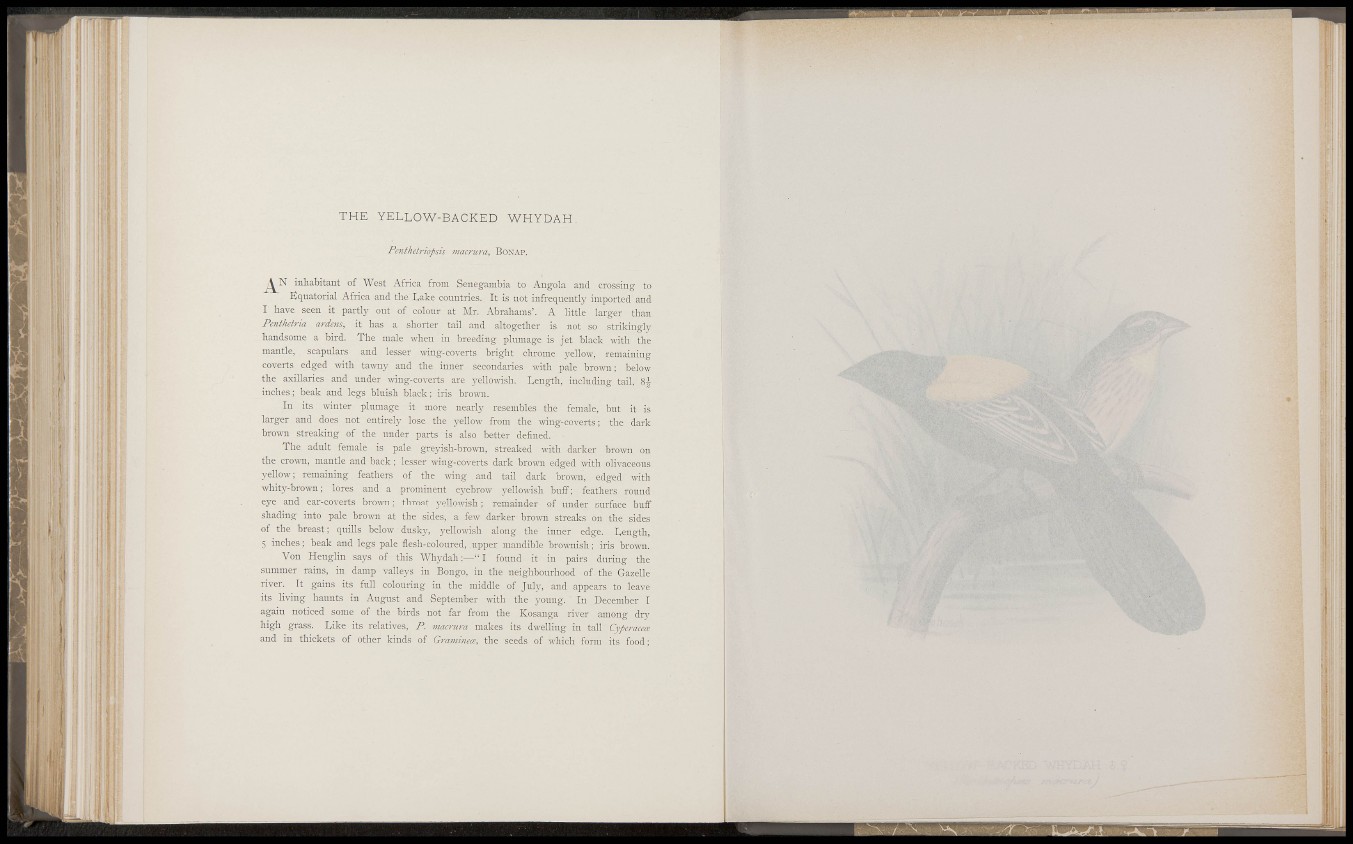
'^i '1
1
1
) I •
!!' !
J , i
H I
!: I
I f
h i :
: f i I
lii-
I f , II I li'«
H , I
i :
, : J i
T H E Y E L L O W - B A C K E D WHYDAH.
Pcnthetriopsis jnacnira, BONAP.
^¿^N inhabitant of West Africa from Senegambia to Angola and crossing to
Eqnatoi-ial Africa and the Lake conntries. It is not infrequently imported and
I have seen it partlj- out of colour at Mr. Abrahams'. A little larger than
Penthetria ardctis, it has a shorter tail and altogether is not so sti'ikingly
handsome a bird. The male when in breeding plumage is jet black with the
mantle, scapulars and lesser wing-coverts bright chrome 3rellow, remaining
coverts edged with ta\\Tiy and the inner secondaries with pale brown; below
the axillaries and nnder wing-coverts are yellowish. Length, including tail,
inches ; beak and legs blnish black; iris brown.
In its winter plumage it more nearly resembles the female, but it is
larger and does not entirely lose the yellow from the wing-coverts; the dark
brown streaking of the under parts is also better defined.
The adult female is pale greyish-brown, streaked with darker brown on
the cro-\TO, mantle and back ; lesser wing-coverts dark brown edged with olivaceous
yellow; remaining feathers of the wing and tail dark brovai, edged with
whity-brown; lores and a prominent eyebrow yellowish buff; feathers round
eye and ear-coverts brown; throat yellowish ; remainder of nnder surface buff
shadmg into pale brown at the sides, a few darker brown streaks on the sides
of the breast; quills below dusky, yellowish along the inner edge. Length,
5 inches; beak and legs pale flesh-coloured, upper mandible brownish ; iris brown.
Von Henglin says of this W h y d a h " I fomid it in pairs during the
summer rains, in damp valleys in Bongo, in the neighbourhood of the Gazelle
river. It gains its full colouring in the middle of July, and appears to leave
its living haunts in August and September ^vith the young. In December I
again noticed some of the birds not far from the Kosa,nga river among dry
high grass. Like its relatives, P. macrum makes its dwelling in tall Cypcracece
and in thickets of other kinds of Graminecc, the seeds of which form its food;